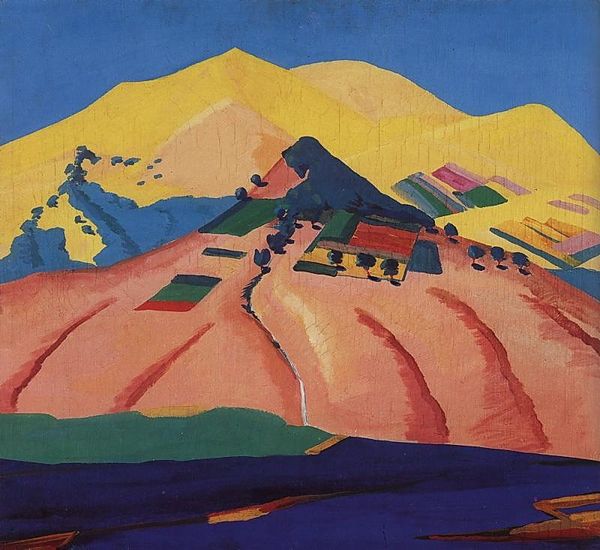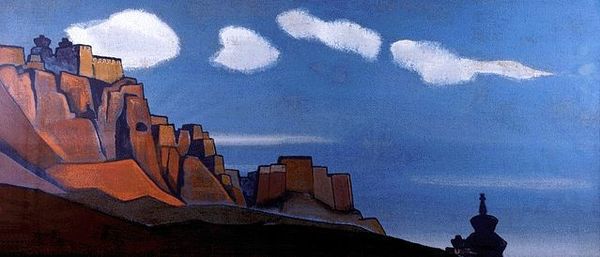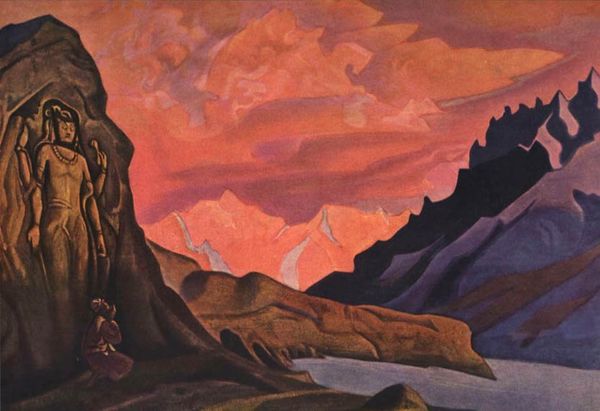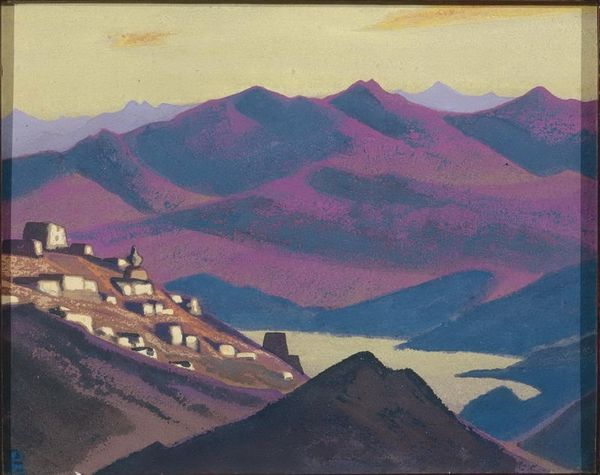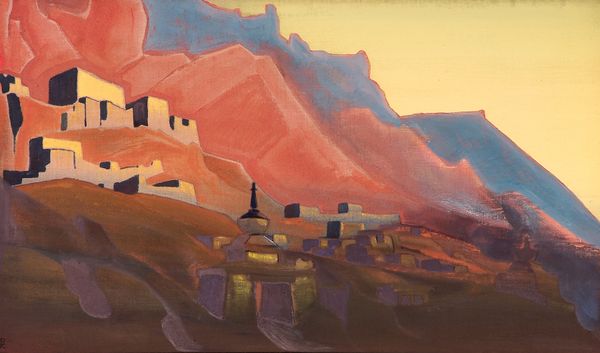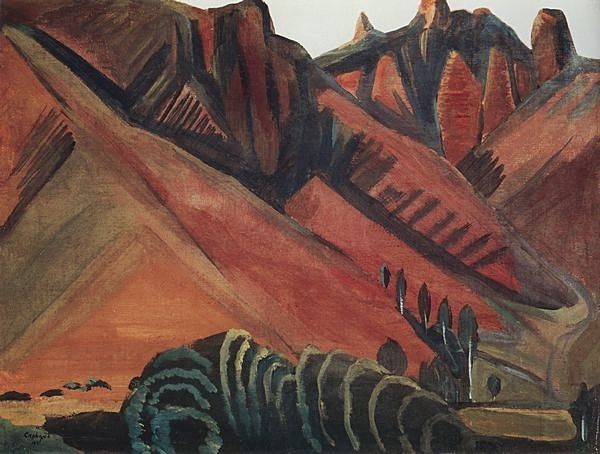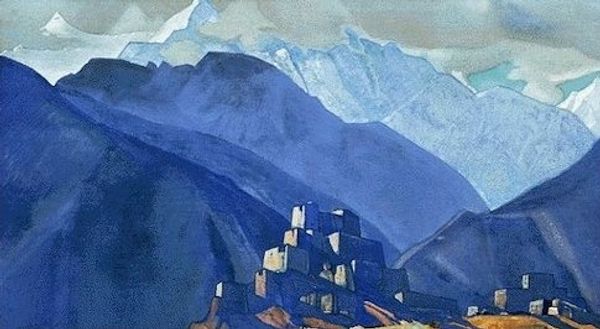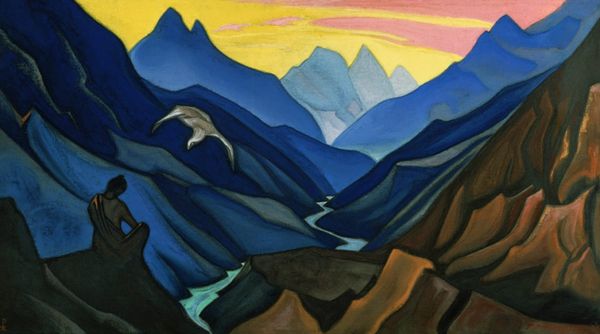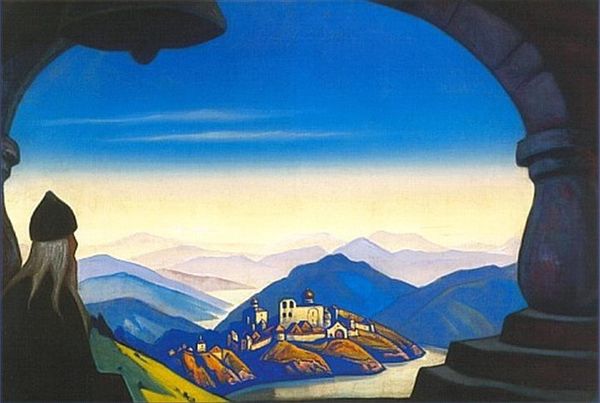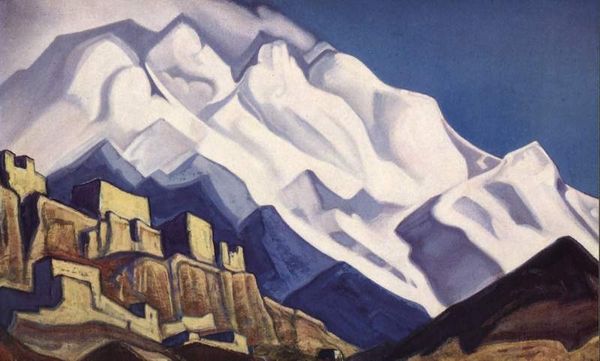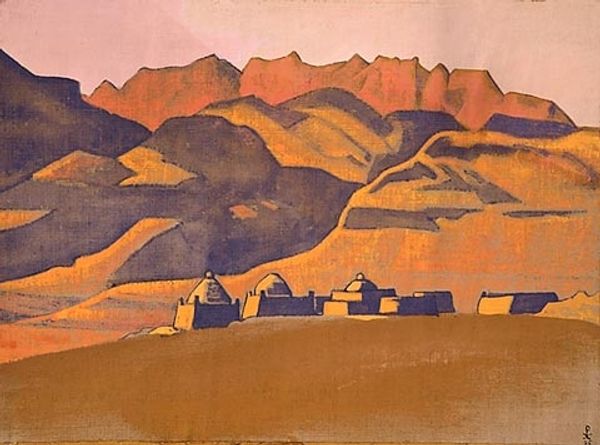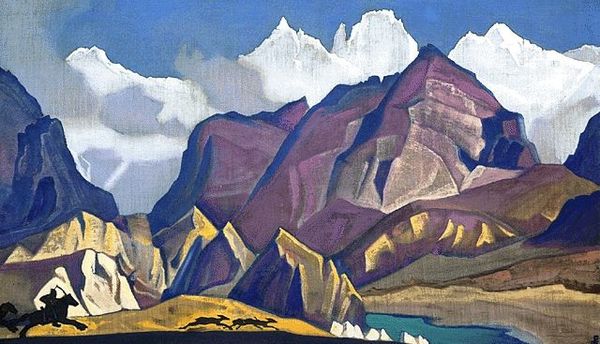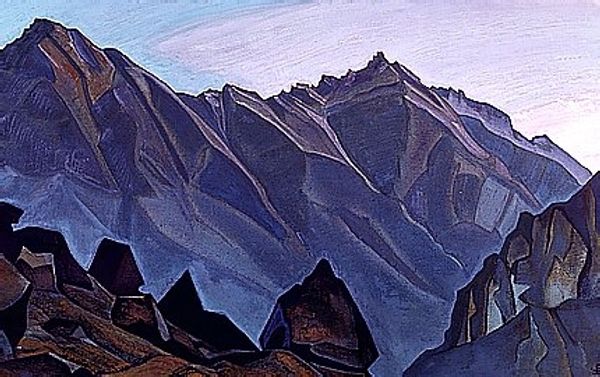
Copyright: Public domain
Curator: Nicholas Roerich's "Lhasa," painted in 1942 using tempera and oil paints, presents a captivating vista of the Tibetan city. Editor: The hues! The dramatic contrast between the cool blues and warm oranges gives it a otherworldly feel. Almost like a stage set, doesn't it? Curator: Indeed. Roerich masterfully orchestrates color to convey a sense of spiritual transcendence. Observe how the geometric simplification lends to its symbolic weight. It appears almost timeless. Editor: Speaking of construction, I wonder about the process. Was this painted in situ or reconstructed from sketches back in the studio? The paint application looks relatively flat, not a lot of impasto. It reinforces that stark quality you mentioned. Curator: Roerich, a known theosophist, often embedded esoteric meanings within his landscapes. Note the positioning of Lhasa, elevated, almost floating; it speaks to the sacred nature the artist attributed to the city. The structure looms large within the visual composition. Editor: That makes me wonder about the labor involved in building the city itself, that's often ignored. Also the materials - were they sourced locally? How does the built environment interact with this landscape and what's the impact to the native peoples? This scene, idealized or not, arose from considerable effort. Curator: Such reflections ground our viewing. But returning to Roerich’s formal choices: the deliberate flattening of space rejects conventional perspective, guiding the viewer toward a symbolic reading. Notice also the way the artist outlines the mountains, adding depth. Editor: A valuable point! To me, thinking of materiality and cultural production reminds me to look beyond any formal idealism towards the people who give texture to such environments, and what part they played in making this a reality. Curator: An excellent complement. "Lhasa" resonates on multiple levels—aesthetic, symbolic, and socio-historical. Roerich’s technique provides entry point for further thought and investigation. Editor: Exactly, this landscape and Roerich's approach highlight the dialogue between surface aesthetics and the labor underlying its existence. Food for thought!
Comments
No comments
Be the first to comment and join the conversation on the ultimate creative platform.
